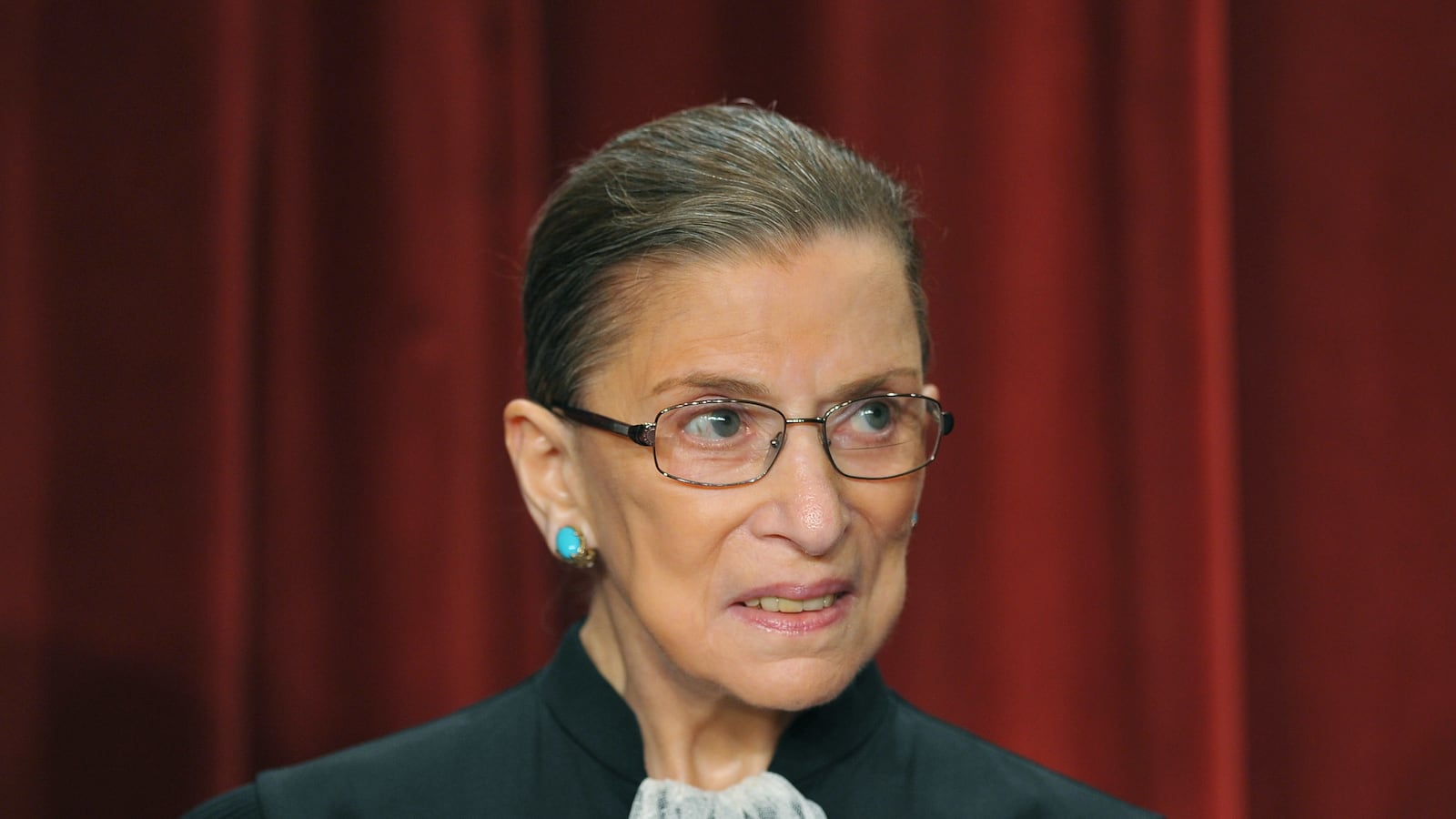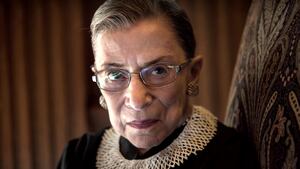Ruth Bader Ginsburg, Supreme Court justice, trailblazing feminist, and the closest thing to a folk hero the high court has ever seen, has died at the age of 87. The Supreme Court announced that she died Friday due to complications from metastatic pancreas cancer.
In a statement dictated to her granddaughter just days before her death, Ginsburg said, “My most fervent wish is that I will not be replaced until a new president is installed.”
Tributes began pouring in instantly. The chief justice, John Roberts, said in a statement that the country had lost “a jurist of historic stature.”
“We at the Supreme Court have lost a cherished colleague. Today we mourn, but with confidence that future generations will remember Ruth Bader Ginsburg as we knew her—a tireless and resolute champion of justice.”
Already the subject of two recent films and countless memes, “RBG” the pop-cultural icon has perhaps obscured Ginsburg’s nearly unparalleled impact on the Supreme Court. Well before her “dissent collar,” jabots, and other decorative apparel; before the fiery dissents that rivaled those of the late Justice Antonin Scalia; even before Ginsburg ascended to the court, her place in judicial history was already assured.
Among 20th-century justices, only Thurgood Marshall played such a powerful role as an advocate—Marshall in cases involving racial equality, Ginsburg in those involving gender equality.
From 1972, when she co-founded the ACLU’s Women’s Rights Project, until 1980 when she became a judge on the D.C. Circuit Court of Appeals, Ginsburg altered the course of constitutional interpretation. She persuaded the Warren Court to extend the 14th Amendment’s Equal Protection clause to women.
In this nearly decade-long campaign, Ginsburg was as much canny strategist as outspoken advocate. In one landmark case, for example, she represented a widower, Stephen Wiesenfeld, who had been denied child care benefits because he was male. She won that case, which advanced the cause of gender equality—in part because it showed how gender discrimination hurt everyone, not just women.
Notably, Ginsburg was already in her forties during this line of cases, because she herself had borne the brunt of discrimination against women.
Born in 1933 to a moderately religious Jewish family in Brooklyn, Ruth Bader quickly distinguished herself, graduating Phi Beta Kappa from Cornell University, then attending Harvard Law School (famously, she was one of nine women in a class of about 500 students total), and transferring to Columbia Law School when her husband, Martin, took a job in New York City. She graduated first in her class.
And yet, she was rejected from a prestigious Supreme Court clerkship, despite glowing recommendations, because she was a woman (she clerked for a district court in New York instead) and spent the ’60s as a law professor at Rutgers, specializing primarily in the dry area of civil procedure. Only in the ’70s did she find her true calling as a lawyer and professor focused on gender equality.
In the ’80s, Ginsburg earned a reputation—perhaps surprisingly, given her subsequent notoriety—as a meticulous, deliberate moderate. After being nominated to the Supreme Court in 1993, she was confirmed by the Senate 96-3, despite articulating clearly liberal positions on the constitutional right to privacy—the foundation of Roe v. Wade and other controversial cases—and gender equality. (The myth that Ginsburg was somehow evasive about these issues, as Justices Neil Gorsuch and Brett Kavanaugh were at their confirmation hearings, has no basis in reality.)
Arguably, Ginsburg’s latter-day reputation only began to take hold in the mid-2000s, as she dissented from rulings by an increasingly conservative Supreme Court. Had Ginsburg “found her voice,” as New York Times Supreme Court reporter Linda Greenhouse put it? Or had the Court simply moved so far to the right that Ginsburg’s views, once mainstream, were now the subject of angry dissents? History will have to judge.
There are ample materials on which to base such a judgment: dissents in cases on so-called “partial-birth” abortion (Gonzales v. Carhart, 2007), workplace discrimination against women (Ledbetter v. Goodyear, 2007), access to contraception (Burwell v. Hobby Lobby, 2014), and many others.
“The ability of women to participate equally in the economic and social life of the Nation has been facilitated by their ability to control their reproductive lives,” Ginsburg wrote in her Hobby Lobby dissent, sharply criticizing the Court’s holding that a corporation could withhold insurance coverage for contraception if it (the corporation) had religious reasons for doing so.
This was a lesson Ginsburg had learned herself. In 1956, she was demoted from her job at the Social Security Administration when she became pregnant. (When she became pregnant with her second child in 1965, she reportedly concealed her pregnancy with loose-fitting clothes.)
And now the Supreme Court had decided that a corporation’s religious freedom took precedence over women’s access to contraception. Ginsburg called it a “decision of startling breadth.”
There were many such decisions in the last years of Ginsburg’s career, as the Supreme Court upheld Donald Trump’s unconscionable Muslim Ban, taking Trump at his word that it was actually a ban against various insecure countries; allowed a religious baker to turn away gay customers; and sharply curtailed voting rights across the country.
In a 2018 interview, Justice Ginsburg said that her judicial philosophy had been shaped by her Jewish experience, in particular “the sense of being an outsider—of being one of the people who had suffered oppression for no sensible reason. It’s the sense of being part of a minority. It makes you more empathetic to other people who are not insiders, who are outsiders.”
In an age of resurgent xenophobia, nationalism, and hate, such empathy is perhaps more crucial than ever. It is a value that ran through Ginsburg’s articles, briefs, opinions, and dissents. More than any “notorious” pop-cultural ephemera, it will be sorely missed.


